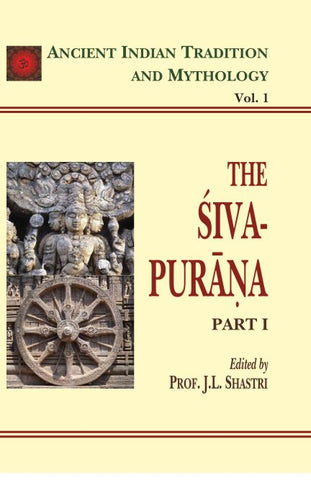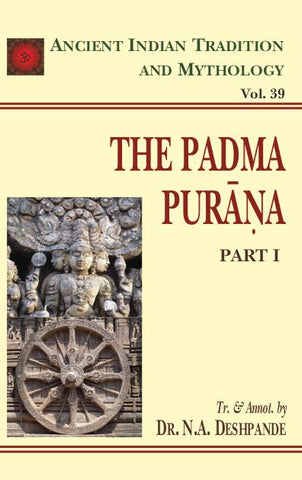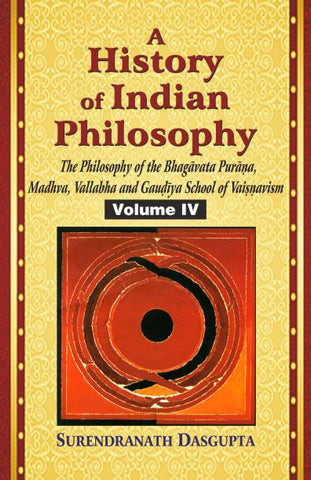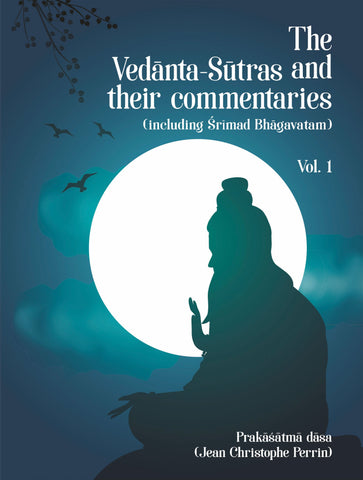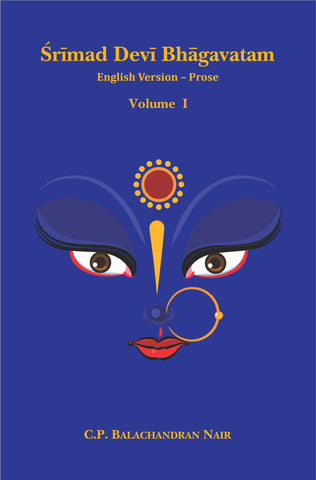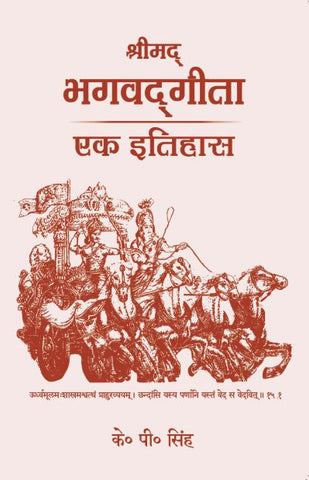Your cart is empty now.
Your search for "purana" revealed the following:
The Siva Purana: 4 Parts in Set (AITM Vols. 1 to 4): Ancient Indian Tradition And Mythology
The Purana is a class of literature that treats ancient religion, philosophy, history, sociology, politics, and other subjects. It is an Encyclopaedia of various branches of knowledge and ancient wisdom. It has been defined as a class of literature that contains material on the topics of Creation, Dissolution of Manus, Ages of Manus, Genealogies, and the History of glorious kings. For dealing primarily with these subjects it has been called Pancalaksana a little that was incorporated in the Puranas themselves and had become popular by the Fifth Century A.D., for it was included by Amarasimha in his lexicon 'Amarakosa'. But... Read More
English Only, 2174 Pgs. (HB)The Padma Purana 10 Parts in Set (AITM Vol. 39 to 48): Ancient Indian Tradition And Mythology
The Purana is a class of literature that treats ancient religion, philosophy, history, sociology, politics, and other subjects. It is an Encyclopaedia of various branches of knowledge and ancient wisdom. It has been defined as a class of literature that contains material on the topics of Creation, Dissolution of Manus, Ages of Manus, Genealogies, and the History of glorious kings. For dealing primarily with these subjects it has been called Pancalaksana a little that was incorporated in the Puranas themselves and had become popular by the Fifth Century A.D., for it was included by Amarasimha in his lexicon 'Amarakosa'. But... Read More
English, 3787 Pgs. (HB)The Ganesa Purana Pt. 2 Krida Khanda (Book-1) (AITM Vol. 75): Ancient Indian Tradition And Mythology
Preface This book is a reworking of an earlier work The Ganesa Purana. Volume One. Upasanakhanda, Otto Harrassowitz, Wiesbaden, 1995. I have revised the translation for this new edition, the Introduction has been substantially shortened and the notes to the translation have been severely truncated. I have tried to make the translation less literal than in the previous volume and I have been able to correct some mistakes in the initial translation, especially following some good suggestions made by reviewers such as Ludo Rocher and John Brockington. Introduction 1. THE GANESA PURANAThe Ganesapurana (GnP.) is a Puranic text probably composed in... Read More
English, 376 Pgs. (HB)The Ganesa Purana Pt. 2 Krida Khanda (Book-2) (AITM Vol. 76): Ancient Indian Tradition And Mythology
Preface This book is a reworking of an earlier work The Ganesa Purana. Volume One. Upasanakhanda, Otto Harrassowitz, Wiesbaden, 1995. I have revised the translation for this new edition, the Introduction has been substantially shortened and the notes to the translation have been severely truncated. I have tried to make the translation less literal than in the previous volume and I have been able to correct some mistakes in the initial translation, especially following some good suggestions made by reviewers such as Ludo Rocher and John Brockington. Introduction 1. THE GANESA PURANAThe Ganesapurana (GnP.) is a Puranic text probably composed in... Read More
English, 287 Pgs. (HB)Biographical Dictionary of Ancient Indian Rsis- Based on Vedas, Upanisads Epics and Puranas (In 2 Vol Set)
India from the Time immemorial has been known to be the land of religion where the Rsis or priestly institutions played a prominent role. The earliest sources of Indian religions history are said to be the Harappan culture and the Vedic literature. Both these sources have sufficient carried out during such a remote past. But the priests were more conspicuous and dominant in the Vedic period as compared to the Harappan culture. The Vedic evidence points to strong priestly institutions who could compose verses not only for the daily worship of the people but also for the performing of homas... Read More
Sanskrit & English, 937 Pgs. (HB)Sri Padma Purana - The Only Text with Sanskrit Text and Hindi Translation with Sloka Index (Set of 7 Volumes)
Sri Padma Purana - The Only Text with Sanskrit Text and Hindi Translation with Sloka Index (Set of 7 Volumes) by Chaukhamba Surbharti Prakashan, Varanasi Read More
Hindi & Sanskrit, 4718 Pgs. (HB)A History of Indian Philosophy (Vol.4): The Philosophy of the Bhagavata Purana, Madhva, Vallabha and Gaudiya School of Vaisnavism
The work appears in five volumes. Vol. I comprises Buddhist and Jaina Philosophy and the six systems of Hindu thought, viz., Samkhya, Yoga, Nyaya, Vaisesika, Mimamsa and Vedanta. Vol. II completes studies in the Sankara school of Vedanta. It also contains the philosophy of the Yogavasistha, the Bhagavadgita and speculations in the medical schools. Vol. III contains an elaborate account of the principal dualistic and pluralistic systems such as the philosophy of the Pancaratra. Bhaskara, Yamuna, Ramanuja, Nimbarka, Vijnanabhiksu and philosophical speculations of some of the selected Puranas. Vol. IV deals with the Bhagavata Purana, Madhva and his school, Vallabha,... Read More
English, 500 Pgs. (PB)The Vedanta-Sutras and their commentaries (including Srimad Bhagavatam): Volume 1
What is Brahman and how the world came into being? What is life? How is Brahman the origin of everything and what is its connection with the world and the living entities? The Vedanta sutras written by Srila Vyasadeva answer all these questions, but since the aphorisms are vague and sometimes incomprehensible, they need a commentary to be understood. The merit of this book is to present and compare the different interpretations of the most essential commentators - Adi Sankaracarya, Sripada Ramanujacarya, Sripada Nimbarkacarya, Srila Madhvacarya, Srila Baladeva Vidyabhúsana - to delineate the views of Sri Badarayana Rsi. The import... Read More
English, 305 Pgs. (HB)Srimad Devi Bhagavatam (in 2 Vol Set): English Version Prose
Srimad Devi Bhagavatam is composed by Veda Vyasa, wherein the Devi is glorified as the Paramatman (Supreme Self)/ Aadi Sakthi. The narrative of the Puranas is generally by giving answers to questions- Saunaka asking questions to Soota on behalf of the group of Munis assembled in Naimisharanya and Soota answering the same. book is in lucid English and is being published in 2 volumes. It first volume covers the Devi Bhagavata Maahaatmya in one part and 6 Cantos of the Devi Bhagavatam in another part. The second Volume renders the Devi Gita from Canto 7 to 12. Thus, this book... Read More
English, 1238 Pgs. (HB)Bhagavad Gita: Ek Itihaas
The Bhagavad Gita is considered by scholars to be a mysterious and very esoteric composition, to know the mysterious truth of which scholars from all over the world had done their work, yet its truth could not come out, what is its truth? What are its basis and its related content? It is also believed that Krishna had given instructions to Arjuna, who had turned away from the war, in Kurukshetra so that he would be ready to fight with the Kauravas, but this fact is not true but a myth. Whatever the scholars told about the Gita, what they... Read More
Hindi, 448 Pgs. (PB)
